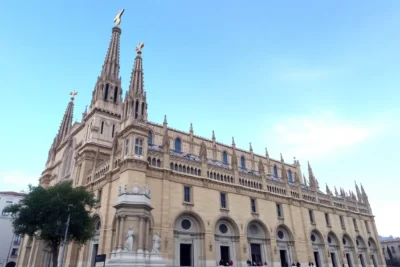
The Sagrada Familia, a masterpiece by architect Antoni Gaudí, is one of the most recognized symbols of Barcelona. This stunning basilica, still under construction since 1882, combines intricate designs with a unique architectural style that captivates millions of visitors each year.
Known for its towering spires and vibrant stained glass, Sagrada Familia: Barcelona's Iconic Church represents the pinnacle of Gaudí's vision and creativity. Its blend of Gothic and Art Nouveau elements makes it a crucial part of the city's cultural heritage and an essential stop for anyone exploring Barcelona.
The Architectural Marvel of Sagrada Familia: A Glimpse into Gaudí’s Vision
The architectural marvel of Sagrada Familia is a testament to the innovative genius of Antoni Gaudí. His vision transcends traditional architectural boundaries, incorporating elements that reflect both nature and spirituality. The basilica showcases a unique structural approach that integrates organic forms with advanced engineering techniques, allowing for its iconic, soaring spires and intricate facades.
One of the standout features of Sagrada Familia is its use of light and color. Gaudí designed the windows to flood the interior with vibrant hues, creating a dynamic atmosphere that changes throughout the day. These stained glass windows not only enhance the aesthetic appeal but also symbolize the sacredness of the space, inviting visitors to experience a sense of divine presence.
Gaudí's attention to detail is evident in every aspect of Sagrada Familia. The design includes a variety of motifs inspired by the natural world, such as tree-like columns that branch out to support the ceiling, resembling a forest canopy. This integration of nature into architectural design reinforces the connection between the earth and the divine, making the experience of visiting this basilica truly unique.
Moreover, the Sagrada Familia is not just a church; it is a living project that incorporates advancements in technology and sustainable practices. The ongoing construction reflects Gaudí's belief in the harmony of tradition and modernity. With its anticipated completion date set for the centenary of Gaudí's death in 2026, the architecture remains a symbol of Barcelona's cultural identity and a beacon of artistic innovation.
Understanding the Symbolism Behind Sagrada Familia: Colors and Designs
The Sagrada Familia is a vibrant tapestry of colors and designs, each element filled with profound symbolism. The use of stained glass is particularly significant, as it represents the light of divinity entering the sacred space. Throughout the day, the changing sunlight interacts with the glass, creating a spectrum of colors that evoke emotional responses from the visitors, enhancing their spiritual journey within the basilica.
Colors in the Sagrada Familia are not randomly chosen; they have been meticulously selected to convey various themes. For instance, warm hues like reds and yellows symbolize joy and divine love, while cooler tones like blues and greens represent tranquility and peace. These color schemes not only beautify the interior but also serve a deeper purpose of guiding the emotional experience of worshippers and tourists alike.
The designs of the Sagrada Familia also carry profound meanings, often mirroring natural forms. The spiral columns resemble trees, symbolizing growth and life, while the intricate facades are adorned with biblical figures and scenes that narrate the story of Christianity. Each decorative element is a reminder of the unity between nature, humanity, and the divine, emphasizing Gaudí's philosophy of integrating spirituality into everyday life.
In essence, understanding the symbolism behind the colors and designs of Sagrada Familia enhances the appreciation of Gaudí's genius. Visitors are encouraged to observe how each aspect of the basilica is interwoven with themes of nature and spirituality, creating not just a place of worship but a profound artistic statement that resonates with the heart and soul of Barcelona.
A Historical Overview of Sagrada Familia: From Concept to Construction
The Sagrada Familia's construction began in 1882, envisioned by architect Francisco de Paula del Villar, whose initial design was in the Gothic style. However, in 1883, Antoni Gaudí took over the project, infusing it with his distinctive vision that combined Gothic and Art Nouveau elements. This shift marked the beginning of a transformative journey, turning the basilica into a unique architectural masterpiece that reflects Gaudí's philosophy and dedication to nature.
Throughout its extensive history, the Sagrada Familia has faced numerous challenges, including financial constraints and political turmoil. Nevertheless, Gaudí's innovative techniques and unwavering commitment to his vision have ensured the project’s continuity. Key milestones in its construction include:
- 1882: Groundbreaking of Sagrada Familia.
- 1914: Gaudí's death, with only a quarter of the project completed.
- 2010: Pope Benedict XVI declared it a basilica.
- 2026: Anticipated completion, coinciding with the centenary of Gaudí's death.
The construction of Sagrada Familia is a remarkable journey that reflects not only the evolution of architectural techniques but also the resilience of its creators. The use of modern technology, such as computer-aided design, has enabled craftsmen to translate Gaudí's intricate designs into reality. This collaboration between tradition and innovation has led to the basilica becoming a symbol of Barcelona's cultural identity, attracting millions of visitors from around the globe.
As Sagrada Familia continues to rise toward the sky, it serves as a testament to the enduring legacy of Antoni Gaudí. His vision transcends time, merging the sacred with the artistic, ensuring that this iconic church remains a focal point of inspiration and wonder for generations to come. The journey from concept to construction highlights not only the architectural prowess but also the spiritual depth that defines this extraordinary monument.
Visiting Sagrada Familia: Tips for Exploring Barcelona's Iconic Church
When planning your visit to the Sagrada Familia, consider purchasing your tickets online in advance. This not only helps you avoid long lines but also allows you to select a time slot that works best for your schedule. Be sure to check for any guided tours available, as they provide valuable insights into Gaudí's vision and the basilica's intricate details, enhancing your experience.
As you explore the church, take your time to appreciate the stunning stained glass windows that play a critical role in creating the spiritual atmosphere within. Visiting early in the morning or later in the afternoon allows you to witness the light filtering through the glass, casting colorful patterns that transform the interior. Don't forget to bring your camera; the breathtaking views both inside and outside are perfect for capturing unforgettable memories.
While visiting, it’s essential to be mindful of the sacred nature of the space. Maintain a respectful demeanor and follow any guidelines provided by the staff. Also, consider visiting during off-peak hours, such as weekdays, to enjoy a more tranquil experience. The quieter times allow you to reflect on the architectural masterpiece without the distraction of large crowds.
Finally, don't miss the opportunity to explore the surrounding area of the Sagrada Familia. The nearby streets are filled with cafés and shops where you can take a break and savor some local cuisine. This creates a perfect blend of cultural exploration and relaxation, making your visit to this iconic church a truly enriching experience.
The Cultural Significance of Sagrada Familia in Modern Barcelona
The Sagrada Familia holds immense cultural significance in modern Barcelona, serving as a symbol of the city's artistic spirit and identity. This iconic basilica is not only a testament to Antoni Gaudí's architectural genius but also a reflection of the city's resilience and innovation. As visitors flock to admire its intricate designs, Sagrada Familia fosters a sense of community and connection among people from diverse backgrounds, making it a unifying landmark in the heart of Barcelona.
Moreover, Sagrada Familia plays an essential role in the ongoing conversation about preservation and modernity in architecture. As it nears completion, the project embodies the fusion of historical craftsmanship and contemporary technology, highlighting how tradition can coexist with modern practices. This aspect has sparked discussions on sustainability in architecture, encouraging other cities to consider similar approaches while respecting their cultural heritage.
Additionally, the basilica serves as a vibrant cultural hub, hosting various events and exhibitions that celebrate local artists and traditions. From concerts to educational programs, Sagrada Familia engages visitors in meaningful ways, enhancing their understanding of both the architectural marvel itself and the broader cultural landscape of Barcelona. This interplay between art and community solidifies its status as a vital component of the city's cultural framework.
Finally, the ongoing construction of Sagrada Familia symbolizes hope and continuity for Barcelona. As the city evolves, this iconic church stands as a reminder of its rich history and the collaborative efforts of countless craftsmen who dedicate their lives to realizing Gaudí's vision. The anticipation surrounding its completion in 2026 further amplifies the communal pride, as people look forward to witnessing the full realization of this extraordinary monument.
Sagrada Familia: A Testament to Gaudí's Genius and Creativity
The Sagrada Familia stands as a definitive testament to Antoni Gaudí's unparalleled creativity and architectural brilliance. His innovative approach to structure and design incorporates a myriad of influences, seamlessly blending Gothic and Modernisme elements. Gaudí's unique vision is not merely about aesthetics; it conveys a deeper narrative about spirituality and the natural world, inviting all who visit to explore the profound connections between humanity, nature, and the divine.
One of the remarkable features of the Sagrada Familia is its intricate detailing and symbolism woven throughout its architecture. Gaudí employed a variety of natural motifs, such as spiral columns resembling trees and facades adorned with biblical scenes that tell the story of Christianity. These elements not only enrich the visual experience but also serve to remind visitors of the unity between nature and spirituality, making the basilica a living canvas of faith and creativity.
Moreover, Gaudí’s commitment to innovation is reflected in the application of modern technology in the ongoing construction of the Sagrada Familia. As craftsmen utilize advanced techniques to bring Gaudí’s vision to life, the basilica stands as a bridge between tradition and contemporary practices. This integration has encouraged other architectural projects worldwide to consider sustainable approaches while respecting historical significance, showcasing Gaudí’s lasting influence on both the field of architecture and the broader cultural landscape.
Finally, the Sagrada Familia is a vibrant cultural landmark that transcends its religious function. It regularly hosts artistic events and community programs, engaging visitors in the rich tapestry of Barcelona's heritage. This constant evolution ensures that the basilica remains not only a site of worship but also a space for cultural dialogue, reinforcing its role as a symbol of hope, resilience, and artistic innovation in the heart of the city.
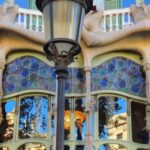 Casa Batlló: Gaudí's Barcelona Masterpiece
Casa Batlló: Gaudí's Barcelona Masterpiece The Sagrada Familia: A Tribute to the Holy Family
The Sagrada Familia: A Tribute to the Holy FamilyIf you want to know other articles similar to Sagrada Familia: Barcelona's Iconic Church you can visit the category Sagrada Familia.
Leave a Reply

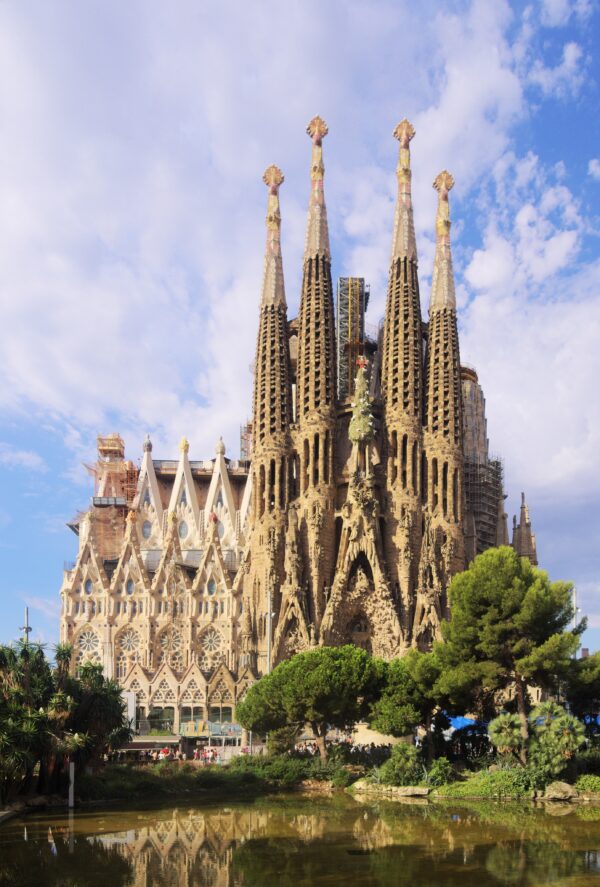
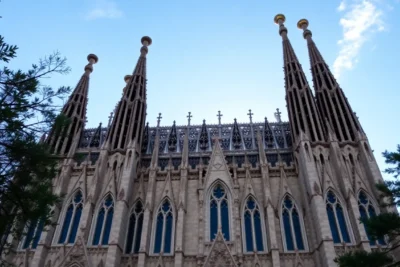
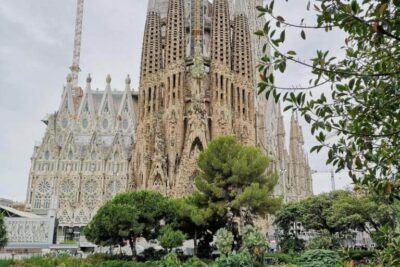
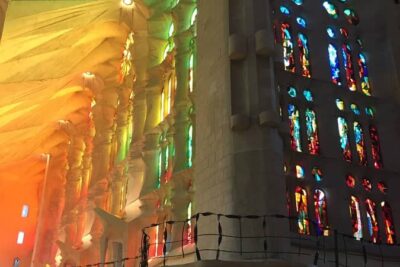
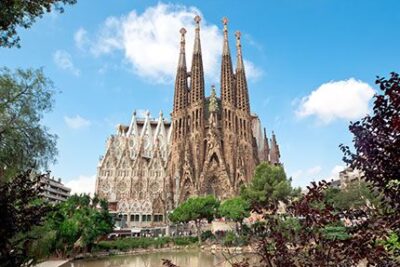
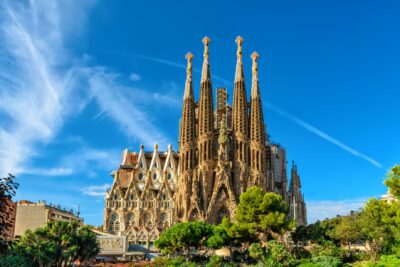
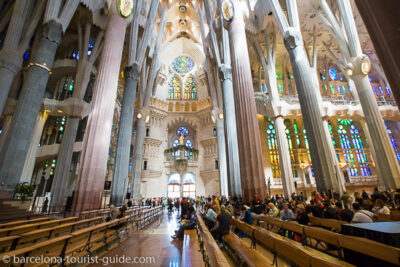
Read more!